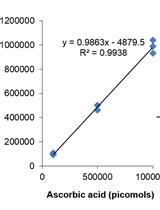- EN - English
- CN - 中文
Fluorescent Detection of Intracellular Nitric Oxide in Staphylococcus aureus
荧光检测葡萄球菌属中的胞内一氧化氮
发布: 2016年07月20日第6卷第14期 DOI: 10.21769/BioProtoc.1878 浏览次数: 9100
评审: Valentine V TrotterLionel SchiavolinAnonymous reviewer(s)

相关实验方案

蓝藻 Synechocystis PCC 6803中抗坏血酸和谷胱甘肽含量的测定
Anabella Aguillera [...] María Victoria Martin
2020年10月20日 3755 阅读

用荧光激活细胞分类术和荧光定量PCR技术分析铜绿假单胞菌环二鸟苷酸的高低亚群
Catherine R. Armbruster and Matthew R. Parsek
2021年01月20日 4388 阅读
Abstract
Nitric Oxide (NO) is a highly-reactive radical gas that can modify a variety of cellular targets in both eukaryotes and bacteria. NO is produced endogenously by a wide variety of organisms: For example, as a cell-signaling molecule in mammals and bacteria via nitric oxide synthase (NOS) enzymes, and as a product of denitrification. As such, it is of great benefit to NO researchers to be able to sensitively detect intracellular NO and stable reactive nitrogen species (RNS) derived from NO. To this end, a protocol for fluorescent detection of intracellular NO/RNS in biofilm cultures of the Gram-positive pathogen Staphylococcus aureus has been optimized using the commercially-available cell-permeable fluorescent stain 4-Amino-5-Methylamino-2’,7’-Difluorofluorescein Diacetate (DAF-FM diacetate). This compound diffuses into cells and intracellular cleavage by esterase enzymes liberates weakly-fluorescent DAF-FM, which reacts with NO or other specific RNS to become highly fluorescent (Kojima et al., 1999). Although quantification of fluorescence is performed using a fluorescent plate reader, it is envisioned that this protocol could be adapted for intracellular NO/RNS imaging of S. aureus biofilms by confocal microscopy. Likewise, this technique could be optimized for the detection of intracellular NO/RNS in other growth conditions (i.e., planktonic cultures) and/or in other bacteria/archaea.
Materials and Reagents
- Wrapping film (Fisher Scientific, Parafilm MTM, catalog number: S37440 )
- Micro-centrifuge tubes (1.7 ml) (Fisher Scientific, catalog number: 14-222-171 )
- Sterile plastic culture tubes (Fisher Scientific, catalog number: 14-956-6A )
- Costar 3524 plates (24-well tissue culture treated) (Fisher Scientific, CorningTM CostarTM ,catalog number: 07-200-84 )
- Costar 3904 plates (96-well black tissue-culture treated) (Fisher Scientific, CorningTM, catalog number: 07-200-588 )
- 150-ml Nalgene sterile disposable 0.2 µm filter unit (Fisher Scientific, Thermo ScientificTM NalgeneTM, catalog number: 09-741-01 )
- 500-ml Nalgene sterile disposable 0.2 µm filter unit (Fisher Scientific, Thermo ScientificTM NalgeneTM, catalog number: 09-741-02 )
- S. aureus stock culture, stored at -80 °C in 25% (v/v) sterile glycerol
- Glycerol (Fisher Scientific, catalog number: G33-1 )
- Tryptic Soy Agar (TSA) plates (BD, BBLTM, catalog number: 221283 )
- Tryptic Soy Broth (TSB) (BD, DifcoTM, catalog number: 211825 )
- Sodium chloride (NaCl) (Fisher Scientific, catalog number: S271-1 )
- Dextrose (Fisher Scientific, catalog number: D16-500 )
- 4-amino-5-methylamino-2’,7’-difluorofluorescein diacetate (DAF-FM diacetate) (Thermo Fisher Scientific, catalog number: D-23842 )
- Dimethyl sulfoxide (DMSO) (100 ml) (Sigma-Aldrich, catalog number: 276855 )
- Human Plasma, lyophilized (5 ml) (Sigma-Aldrich, catalog number: P9523 )
- Carbonate-Bicarbonate buffer capsules (Sigma-Aldrich, catalog number: C3041 )
- 1x Hank's buffered salt solution (HBSS) buffer, containing calcium and magnesium (Fisher Scientific, CorningTM cellgroTM, catalog number: MT21023CV )
- Diethylamine (DEA) (100 ml) (Sigma-Aldrich, catalog number: 471216 )
- Diethylamine NONOate (DEA/NO) (10 mg vial) (Cayman Chemicals, catalog number: 82100 )
- 2-(4-carboxyphenyl)-4,5-dihydro-4,4,5,5-tetramethyl-1H-imidazolyl-1-oxy-3-oxide, monopotassium salt (cPTIO) (5 mg vial) (Cayman Chemicals, catalog number: 81540 )
- Sterile nuclease-free H2O (Fisher Scientific, InvitrogenTM AmbionTM, catalog number: AM9930 )
- NaOH (Thermo Fisher Scientific, catalog number: S318-500 )
- 50% (v/v) Glycerol Stock Solution(see Recipes)
- Biofilm Media (see Recipes)
- Carbonate-Bicarbonate Buffer (see Recipes)
- 20% Human Plasma (see Recipes)
- DAF-FM diacetate stock solution (see Recipes)
- 0.01 M NaOH solution (see Recipes)
- DEA/NO stock solution (see Recipes)
- cPTIO stock solution (see Recipes)
- DAF-FM diacetate working solution (see Recipes)
- DEA/NO working solution (see Recipes)
- DEA working solution (see Recipes)
Equipment
- Multi detection microplate reader (Biotek synergy HT, model: SIAFR )
- 10S Bio UV/Vis Spectrophotometer (Thermo Fisher Scientific, GENESYSTM, model: 840-208100 )
- Plate incubator (VWR International, catalog number: 97058-224 , model: 1556)
- Shaking incubator (VWR International, SignatureTM, catalog number: 14004-300 , model: 1570)
- Pipet-Lite XLS+ single-channel pipettes (2-20 µl, 20-200 µl, 100-1,000 µl) (Rainin, catalog number: 17014406 )
- Rack LTS tips (“P20” 2-20 µl, “P200” 20-200 µl, “P1000” 100-1,000 µl) (Rainin, Green-PakTM and SpaceSaverTM, catalog number: 17001865 , 17001863 and 17001864 )
- Labconco Class II A2 Biosafety Cabinet (Fisher Scientific, LabconcoTMPurifierTMLogic+TM, catalog number: 30-238-1100 )
- Vortex Mixer (Fisher Scientific, Fisher ScientificTM, catalog number: 02-215-365 )
- Micro-centrifuge (Fisher Scientific, Fisher ScientificTM accuSpinTM, catalog number: 13-100-675 )
- Chemical Fume Hood
- Refrigerator (4 °C)
- Freezer (-20 °C)
- Freezer (-80 °C)
Procedure
文章信息
版权信息
© 2016 The Authors; exclusive licensee Bio-protocol LLC.
如何引用
Lewis, A. M., Matzdorf, S. S. and Rice, K. C. (2016). Fluorescent Detection of Intracellular Nitric Oxide in Staphylococcus aureus. Bio-protocol 6(14): e1878. DOI: 10.21769/BioProtoc.1878.
分类
微生物学 > 微生物新陈代谢 > 其它化合物
微生物学 > 微生物信号传导 > 第二信使
生物化学 > 其它化合物
您对这篇实验方法有问题吗?
在此处发布您的问题,我们将邀请本文作者来回答。同时,我们会将您的问题发布到Bio-protocol Exchange,以便寻求社区成员的帮助。
提问指南
+ 问题描述
写下详细的问题描述,包括所有有助于他人回答您问题的信息(例如实验过程、条件和相关图像等)。
Share
Bluesky
X
Copy link









